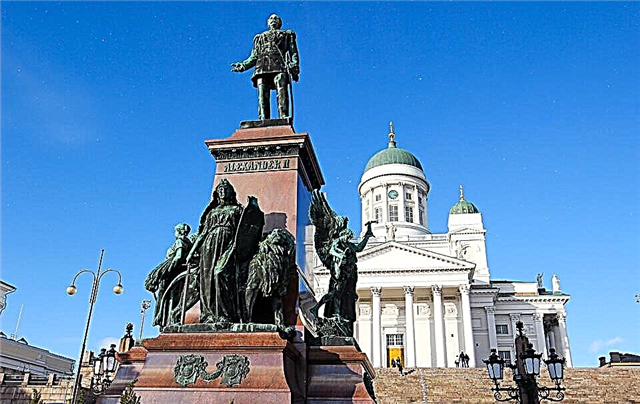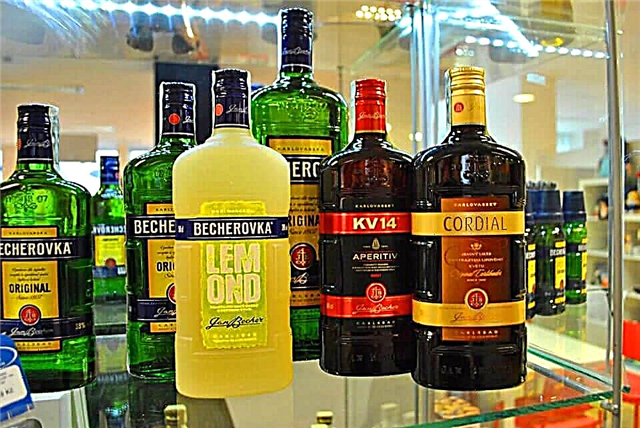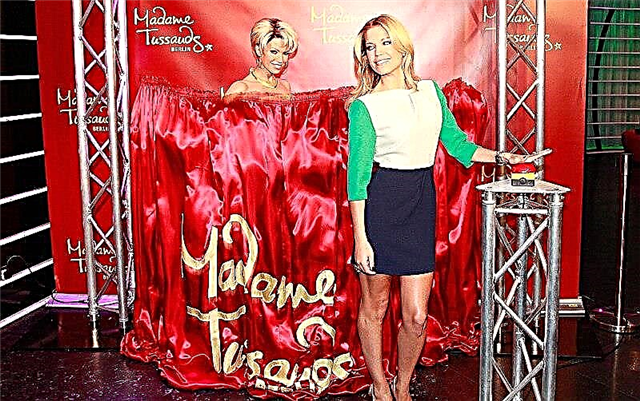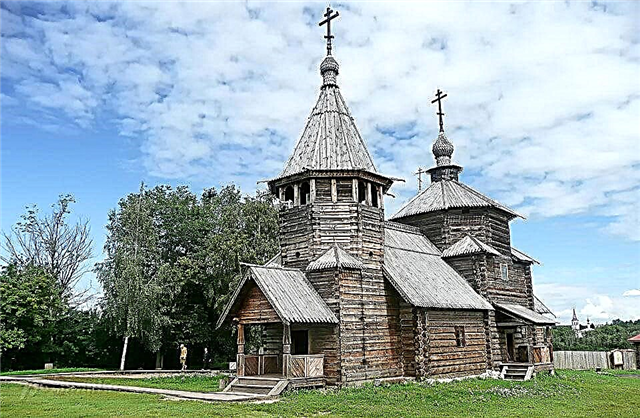Content:
Where is it interesting and healthy to spend the May holidays? It's a good idea to visit the nature reserve! Over the weekend, you can admire the awakening nature, see rare animals and birds and breathe in the fresh air. We offer an overview of 10 protected areas that are easy to reach from Central Russia.
Prioksko-Terrasny Reserve

Bison nursery in the Prioksko-Terrasny nature reserve
The reserve closest to the capital is located on the border of the forest and the steppe, in the Serpukhovsky district of the Moscow region. Almost 1000 species of vascular plants grow here, 57 species of mammals and 142 species of birds live.
The road from Moscow to the estate of the reserve - the village of Danki takes less than two hours (104 km). Natural wonders are easy to get to know during the day, but it is better to come with overnight stays. Spend time at the Nature Museum, bison nursery, and hiking.
Where to stay. By prior arrangement with the administration, tourists are accommodated in guest houses. Many spend the night in hotels in Serpukhov and at tourist centers in the Tarusa region.
How to get there. By car they drive along the Simferopol highway, and after the "97 km" turn towards the sign for Serpukhov / Danki. Those who get there without a car, by bus or commuter train, come to Serpukhov. A regular bus runs from the station square to Dankov. The central estate is located 0.2 km from the Zapovednik bus stop.
Oka State Reserve

Crane nursery in the Oka State Reserve
The Pra river valley and the Oka floodplain are a very picturesque sight. In early May, nature wakes up from winter sleep, and flood reigns around. It is best to travel around Meshchera by kayak, but even if you come to the Oksky Nature Reserve without it, you will not be bored.
The Directorate is located in the village of Brykin Bor, Ryazan Region. Visit the Museum of Nature and see purebred bison The village has a unique nursery where several species of cranes are kept, including the famous white Siberian Cranes. If you're lucky, they'll show you little chicks.
Where to stay. In tents in permitted parking, located on the right bank of the Pra River. Want more comfort? Make an agreement with the administration and spend the night in a guest house on the territory of the estate.
How to get there. By car they go to Ryazan. From here to Brykin Bora there is a 120 km path through Spas-Ryazansky and Lakash. If you travel on your own, you can get from Ryazan to Brykin Bor by fixed-route taxis.
National Park "Meshchersky"

Ecological trails in the Meshchersky National Park
The territory of the park lies in the Ryazan region and covers the Klepikovsky lakes and the Pra river valley. The nature of these places is amazing. It was painted by artists, lyric poetry was composed about it, and Konstantin Paustovsky wrote beautiful stories about the beauty of Meshchera.
On the Klepikovskie lakes and Pre there is excellent fishing. In the town of Spas-Klepiki there is a memorial museum of Sergei Yesenin, and in the village of Lunkino - a museum of wooden architecture. Hikers enjoy walking along ecological paths and creating independent trails.
Where to stay. The tents are set up in special parking lots. In the area of Spas-Klepikov, in the village of Podushkino, there is a tourist center "Meschera".
How to get there. The office of the national park is located in Spas-Klepiki, on the street. Lenin, 20. The road from Moscow by car takes 3.5 hours. Regular buses run from the bus station near the Shchelkovskaya metro station to Spas-Klepikov.
Voronezh Biosphere Reserve

On the territory of the Voronezh Biosphere Reserve
The reserve was created to protect beaver lands. Today, in addition to beavers, moose, red deer, roe deer and wild boars live on an area of 30 thousand hectares. An ecological trail has been laid along the reserve, and a rope park "Yezhkiny paths" operates. The Museum of Nature is open in the estate. Animals are shown in the beaver town. There is another museum dedicated to the famous Russian writer and naturalist Vasily Mikhailovich Peskov.
Where to stay. The most convenient option is the hotel of the reserve.
How to get there. On the M4 highway, 12 km before Voronezh, turn left at the sign for Rostov. They leave for the Tambov highway and turn right from it - to Orlovo. The way to the station "Grafskaya" lies through the Paris Commune and Malaya Privalovka. Those who get there on their own come to Voronezh by train. Bus number 310 runs from the railway station to the reserve.
Lake Pleshcheyevo National Park

View of Lake Pleshcheyevo
The rounded lake is a real pearl of the "Golden Ring" of Russia. The vastness and fresh breeze attract kitesurfers and fans to see the world from the height of a hot air balloon. The national park covers not only natural attractions and the lake water area. There are several archaeological and historical monuments on its territory.
On the shore of the reservoir stands the Blue Stone, covered with legends. The earthen ramparts of the ancient settlement Kleshchino have been preserved here. You can take excursions to the monasteries of the ancient Pereslavl-Zalessky, look at the boat of Peter I, visit the museums of teapots, irons and enjoy the beauty of the dendrological garden.
Where to stay. Tent camps are allowed near the lake shore. Paid parking is available near the Blue Stone and at two equipped sites of the national park. For more civilized overnight stays, the "Sin Stone" camp site, "Pleshcheyevo" and "Okhana" recreation centers are suitable.
How to get there. From Moscow by car or bus you get to Pereslavl-Zalessky - 130 km. It is convenient to get from the city bus station to the desired place by taxi.
National Park "Zavidovo"

In the national park "Zavidovo"
The park is located in the Moscow and Tver regions, on the old moraine relief, which remained after the retreating glacier. According to UNESCO, Zavidovo is one of the most ecologically clean places in the world. The mixed forests are home to more than 40 species of mammals - elk, wild boar, roe deer, lynx, sika deer and red deer.
The territory is heavily guarded, since the government residence "Rus" is located here. In many settlements, entry for cars is with a permit. It is easier for "horseless" travelers, because part of the park is officially open to tourists.
Where to stay. Cottages on the territory of the recreation complex "Zavidovo" in the village of Shosha.
How to get there. From the Leningradsky railway station in Moscow they get to Zavidovo, and from there 10 km by bus to the park's estate - the village of Kozlovo.
National Park "Smolenskoe Poozerie"

House-Museum of N.M. Przhevalsky in the national park "Smolenskoe Poozerie"
Protective lands in the Demidovsky and Dukhovshchinsky districts of the Smolensk region appeared in 1992. Since the time of the Ice Age, 35 lakes have remained here. The park resembles a rhombus in shape, with diagonals of about 50 km. It was created to protect deciduous and dark coniferous forests and archaeological sites - Stone Age sites, burial mounds and ancient settlements.
An ecological path has been laid along the territory. Traveling here, it is interesting to visit the museum of N.M. Przhevalsky and the birch bark museum, visit the old temples, the source "Holy Well", see the memorial sites associated with the events of the Great Patriotic War. The staff can arrange paid excursions for tourists.
Where to stay. It is allowed to set up tent camps only in special camps. You can spend the night at the Rodnik Hotel, in private houses in Przhevalskoye, a guest house on Lake Petrakovskoye and in the center of environmental education on the shores of Lake Baklanovskoye.
How to get there. The head office is located in the village of Przhevalskoye, not far from Smolensk.From Moscow they go along the E30 highway, and then along the E133. Outside the city of Demidov, turn to Przhevalskoe. Regular buses run from the Smolensk bus station to Przhevalsky.
Rostov reserve

A herd of feral horses on Vodny Island in the Rostov Nature Reserve
It is almost summer 1100 km south of Moscow in early May! The steppe is blazing from the colors of blooming tulips. There are two ecological routes for tourists in the reserve. One introduces the Red Book of plants and migratory birds. You can hear the singing of a lark and admire the cascades of salt lakes. Another route was created for those who want to look at the mustangs grazing in the steppe, take pictures near an ancient stone woman and ride a motorboat across the lake expanses.
There is an interesting Museum of Nature in the Rostov Reserve. Traveling around the territory is allowed only after issuing passes.
Where to stay. Tourists are welcomed in wooden guest houses and at the Tulpan Hotel in the village of Orlovsky.
How to get there. The pass is issued by the visit center, which is located in the village of Volochaevsky (Podstantsionnaya st., 5). From Rostov-on-Don, people come here by regular buses that go to Podgornoye. The journey takes about 7 hours.
Natural reserve "Utrish"

Pearl waterfall
If you want real warmth, you should spend your time and go to the Black Sea coast of the Caucasus. On the May holidays in Utrish there are not so many people, and the weather is almost summer.
The reserve encompasses forested foothills where beeches, hornbeams, junipers, pistachios and Pitsunda pines grow. These are great places for walking and cycling. For fans of ecological tourism, interesting routes have been laid along the territory. You can go to the performances in the famous Utrish Dolphinarium, walk along the seashore to the Pearl Falls and visit the "African Village" and the "Lion's Head" castle in the neighboring Sukko.
Where to stay. In tents - in the camping "Utrishskaya Volna" or in a car camp. In Bolshoy Utrish, they rent rooms from private traders and spend the night in guest houses.
How to get there. It takes 30-40 minutes to get from Anapa to Utrish by regular buses or minibuses.
Caucasian State Biosphere Reserve

Ecological trail along the Khosta River in the Yew and Boxwood Grove
The history of the reserve began with a bison nursery, which was established in 1924. Today it is the largest natural area of the North Caucasus, where rare animals and pristine mountain landscapes are protected. Tourists love the cleanest air, picturesque waterfalls, caves and mountain trails.
You can get to the reserve in different ways. One of the most convenient - from Adygea, along the valley of the Belaya river. The cordon is located in the mountain village of Guzeripl, at an altitude of more than 650 m above sea level.
Where to stay. The most popular option is in tents. More comfortable - at the recreation center "Enektur" or in the hotels of Guzeripl.
How to get there. From Moscow to Guzeripl, by road - 1480 km. Some tourists arrive in Krasnodar and then take a taxi to the cordon (203 km). Others go by train to Belorechensk, and then by train to the Khadzhokh station. From here, regular buses and taxis go to Guzeripl (46 km). In addition, buses to the village run from Maykop.











